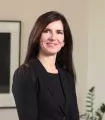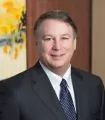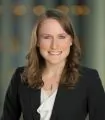The annual ALI-CLE Accountants' Liability Conference took place in Washington, D.C. from May 16-17, 2024. Veronica Callahan, partner and Chair of the Securities Enforcement and Litigation practice group at Arnold & Porter, co-hosted the conference with Junaid Zubairi, Chair of Vedder Price PC's Government Investigations and White Collar Defense practice. The conference, which has run for over 30 years, has become a destination point for professionals in public and private practice in the accounting profession.
As has become a hallmark of the conference, featured speakers included key regulators from the U.S. Securities & Exchange Commission (SEC) and the Public Company Accounting Oversight Board (PCAOB), as well as senior in-house counsel, outside counsel, consultants, and professionals. Notably, the day one keynote speaker was Paul Munter, Chief Accountant at the SEC, who released a statement shortly before the conference entitled, "Fostering a Healthy 'Tone at the Top' at Audit Firms." The day two keynote speaker was PCAOB Board Member George Botic, who released his speech shortly after the conference entitled, "The Financial Reporting Ecosystem: Past and Present, and the Anatomy of an Audit Firm."
As discussed in more detail below, both Messrs. Munter and Botic provided important commentary on new PCAOB rulemaking and standard setting initiatives, including the PCAOB's new quality control and auditing standards adopted the week of the conference. They also addressed the state of the audit profession and the focal points of the regulators in today's changing market, including the role of auditors as gatekeepers, "tone at the top," ethics and integrity, independence in an evolving environment in which private equity investments and alternative practice structures are becoming more commonplace, and consulting practices that make up increased revenue for most firms.
The conference also featured panels including senior SEC and PCOAB enforcement personnel, high-ranking PCAOB personnel out of the Division of Registration and Inspections, and preeminent in-house and external counsel speaking on cutting-edge topics such as emerging structures for accounting firms; the role of generative artificial intelligence (AI) and emerging technologies impacting the audit profession; the role that auditors play in providing assurance on environmental, social, and governance (ESG) issues; international issues; challenging the regulators; and facing two or more parallel investigative proceedings.
Several Arnold & Porter attorneys spoke at the conference, including Ms. Callahan, who moderated two panels: one on the PCAOB Inspection Program and the other which was entitled "AI and Emerging Technologies in the Accounting Industry." Additionally, Jane Norberg spoke on the "Proactively Addressing Escalating Issues" panel, moderated by Christian Schultz, and Dan Hawke spoke on "The Role Auditors Play in Providing Assurance on ESG Issues" panel.
Highlights from keynote addresses, and other key points from the conference are described below.
Keynote: SEC Chief Accountant Paul Munter
Expounding on his recently released statement, Chief Accountant Munter started the conference with a keynote address focused on fostering a healthy "tone at the top" at audit firms. In the address, Chief Accountant Munter emphasized how senior management and those in national and local leadership positions, and the tone they set, play a critical role in audit firms acting as essential gatekeepers in the capital markets. Chief Accountant Munter emphasized the need to not sacrifice integrity and professionalism for profit or growth. After all, he explained that auditing is a "profession" devoted to the "public good," and is different than an "industry" in which the focus is on bottom-line revenue. He rejected the concept of "efficient breaches," seen as the "cost of doing business," because this undermines public trust in the audit function and cannot be normalized.
According to Chief Accountant Munter, an appropriate tone at the top creates a "value congruence" that reinforces rather than undermines ethical conduct, whereas a poor tone can have a negative reinforcement effect on culture. He explained that a poor tone at the top can have a "bad apple effect," and that studies have shown a "selective attrition effect" where unethical leaders, by attraction and retention of employees, can create a "breeding ground" for unprofessionalism, resulting in more ethical employees feeling alienated, and leaving the firm. Part of avoiding this outcome, he explained, is influenced by the ability to control rewards, including compensation and promotion decisions. Actions speak louder than words and it is important to pay attention to the tone set by others, with the focus on getting the tone right. Chief Accountant Munter said that the new quality control standard, QC 1000, "A Firm's System of Quality Control," focuses on the role of firm governance and individual accountability, among other things, in achieving these objectives.
Chief Accountant Munter also addressed a recent trend involving investments from third parties, such as private equity firms, in audit firms, and the risk that this creates for independence, audit quality, and tone at the top. He cautioned about the "distraction effect" that alternative practice structures may have on audit quality, even when there may not be an independence impairment. He further cautioned against touting efficiencies in pitching for new business, and that the focus should instead be on a track record of high quality audits.
Chief Accountant Munter ended the address by highlighting the importance of consistent messaging across lines of business in audit firms, so that it is clear to everyone that audit quality, professional ethics, and independence are the firm's top priority.
Keynote: PCAOB Board Member George Botic
In his keynote address introducing the second day of the conference, PCAOB Board Member George Botic delivered an address focused on the financial reporting ecosystem, past and present, and the anatomy of an audit firm. At the outset of his remarks, Mr. Botic made clear that the public interest is a "non-negotiable" aspect of the accounting profession, and that the public interest is "paramount, overarching, and foundational."
He began by offering some historical context for the role of the financial statement audit to society, because we cannot understand what is happening now if we do not understand what came before. He explained that the current state of the auditing profession and the PCAOB's activities were preceded by stories of what happens when the financial reporting ecosystem breaks down. Lessons from history underpin the federal securities laws and remain relevant, including the importance of maintaining a "steady skeptic voice," which "requires not only courage, but proper support."
Board Member Botic turned to some features of the PCAOB's standard-setting agenda, outlined in its 2022 to 2026 Strategic Plan as one of its main goals. He focused on two standards adopted by the PCAOB on May 13, 2024, QC 1000 and AS 1000, and related amendments, which are now under review with the SEC. He described QC 1000 as what "might be thought of as a generational standard that will significantly change the requirements for the quality control system under which public company audits are performed." He said that QC 1000 was designed with the objective of being "a proactive, risk-based approach to quality control with certain mandated quality objectives to ensure firms appropriately design, implement, and operate their quality control systems."
Board Member Botic explained how QC 1000 identifies eight integrated components of a quality control system. The first two are process components: a firm's risk assessment process and the monitoring and remediation process. The remaining six are governance and leadership, ethics and independence, acceptance and continuance of engagements, engagement performance, resources, and information and communication. He highlighted certain roles and responsibilities in QC 1000, including (1) the firm's principal executive office who is ultimately responsible and accountable for the quality control system as a whole, including its design, implementation, and operation and its annual evaluation which is certified to the PCAOB and (2) individuals who are assigned to take operational responsibility and accountability for the quality control system as a whole, for the firm's compliance with ethics and independence requirements, for the monitoring and remediation process, and, if appropriate, for other components of the quality control system.
Board Member Botic emphasized how QC 1000 includes provisions that support a strong "speak up" culture, with a program for collecting and addressing complaints and allegations, including a focus on protecting those who raise their hand from retaliation.
Board Member Botic addressed AS 1000, "General Responsibilities of the Auditor in Conducting an Audit," meant to replace, improve, and streamline preexisting standards without changing auditors' responsibilities. He highlighted three points regarding AS 1000: (1) the standard adds context to the concept of reasonable assurance, by emphasizing that reasonable assurance is a high level of assurance obtained by reducing audit risk to an appropriately low level through application of due professional care; (2) the adopting release cites the determination of critical audit matters as an example of the auditor's professional judgment; and (3) the standard confirms that an auditor is required to take into account PCAOB auditing interpretations.
Board Member Botic concluded his remarks by referencing "troubling indicators" with respect to the current state of audit quality. He identified his suggestions for five processes or functions that operate together and are necessary to keep an audit firm healthy and functioning:
1. Accountability, including tone at the top and also the "middle," which acts as the "circulatory system" of the audit firm
2. Independence in fact and in appearance from companies it audits, which requires constant vigilance, and acts as the "skin" of the audit firm
3. Integrity, which when coupled with independence, provides an audit firm its highest currency — trust — and acts as the "ligaments and tendons" or "binding agent" of the audit firm
4. Investor focus, which listens and adapts to investor concerns and corresponds to the "ears" of the audit firm, used to hear, and the "inner ear," to maintain balance
5. Voice, which is how firms communicate internally and with the profession, investors, and the broader public
Other Key Takeaways From the Conference
In addition to the keynote addresses, below are some further takeaways from the conference:
- The PCAOB is using its inspection program to drive improvements in audit quality, amid indications per the PCAOB that the downward trend in audit quality continues. One of the ways the PCAOB is doing this is by use of a "target team" to identify areas of emerging risks for audit firms. The PCAOB is also regularly engaging with firms by scheduling standing meetings, and sharing insights and observations, and is focused on increasing transparency in reporting inspection results. An initiative is underway at the PCAOB to understand audit firm culture to further improve audit quality. The PCAOB continues to share insights and good practices drawn directly from inspections via its Spotlights.
- In deciding whether to publish Part 2 deficiencies in its inspection reports, the PCAOB looks to the effectiveness of remediation and whether a root cause analysis was conducted (see recent Spotlight on root cause analyses), including by focusing on how audit firms have taken steps to present recurring deficiencies: (1) for each corrective action, how meaningful was the change to the system of quality control; (2) how the action is responsive to quality control concerns; (3) how the action was designed; (4) how the action was implemented; and (5) how the action achieved the proposed effect. QC 1000 now requires a firm to perform a root cause analysis of all quality control deficiencies.
- The SEC and PCAOB remain purposeful in the language used in orders and press releases as a way to partner with gatekeepers, including as gatekeepers contend with emerging topics like special purpose acquisition companies, cybersecurity, ESG, and AI-related risks. Recent orders are detailed for a reason and the regulators have been focused on fashioning remedies that ensure they do not see the same repeat players moving forward.
- The PCAOB appears to be having a record-breaking year in terms of the number of enforcement actions and civil monetary penalties, which are already beyond the penalties for 2023. This is due in part to a recent record US$25 million fine related to exam "cheating" at an audit firm.
- The SEC and PCAOB enforcement divisions work together, meeting quarterly to discuss cases and often receiving joint self-reports. The regulators' collaboration is informed in part by the nature of remedies they have at their disposal and the nature of the proceedings, including confidentiality restrictions.
- The SEC and PCAOB continue to emphasize the benefits of early, quality self-reporting and meaningful cooperation. Cooperation can mean, for example, sharing a key set of documents, even when not requested by a subpoena, and having a productive dialogue around important issues. The regulators do not publicly discuss the cases that are not brought, which is a sizable portion of their caseload.
- AI stands to change the auditing profession landscape. According to a recent white paper referenced at the conference, 72% of companies are piloting or using AI in financial reporting and that number is expected to reach almost 100% in the next three years. The expectation is that this emerging technology will be commonplace within the auditing profession in the near future, and it will be imperative to build controls around its usage in financial reporting and the auditing function.
- Alternative practice structures require constant vigilance and analysis of the entire ownership structure for independence. This must be done on the day the deal closes, and every day after that.
The content of this article is intended to provide a general guide to the subject matter. Specialist advice should be sought about your specific circumstances.






